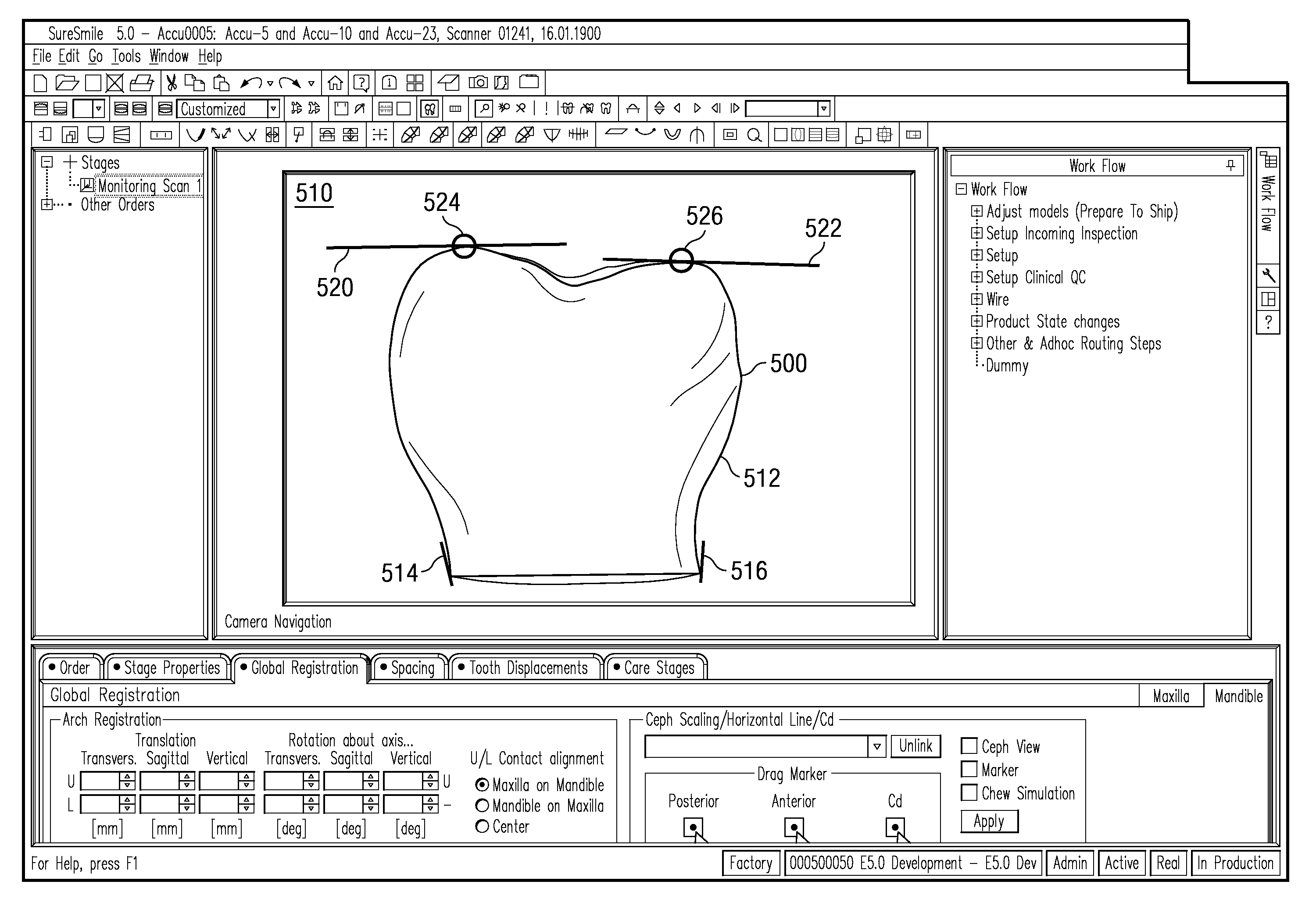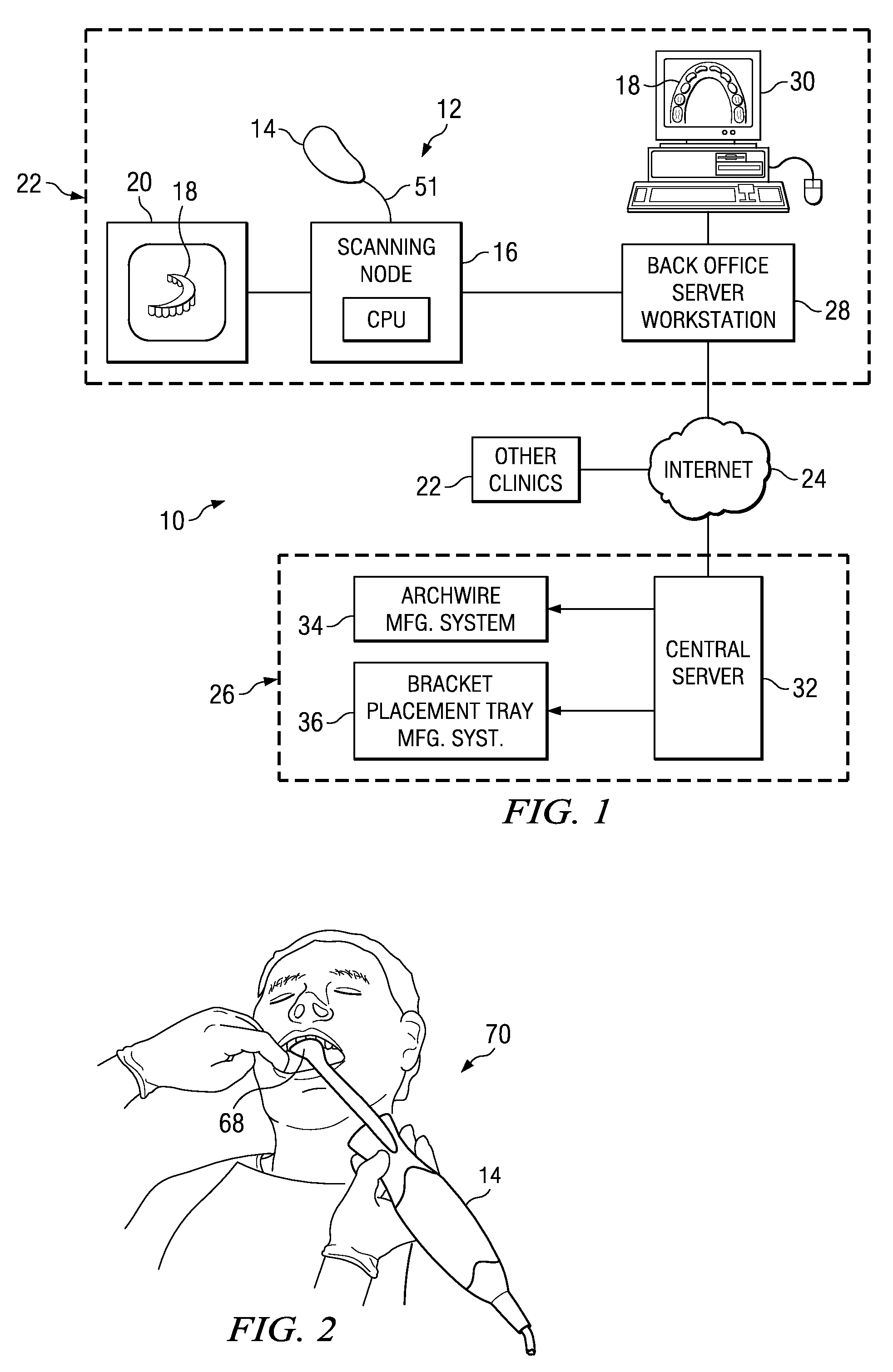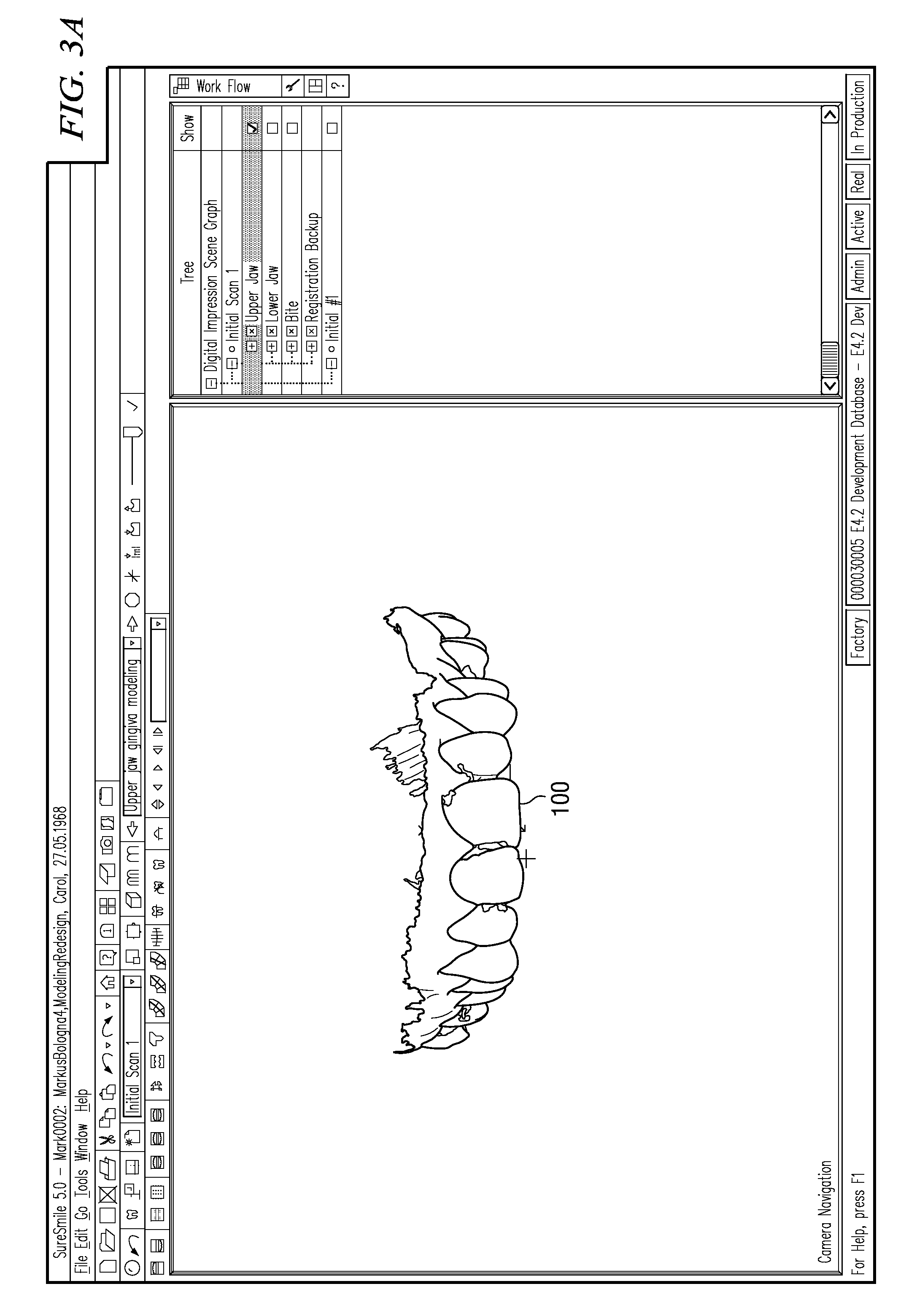Method and system for finding tooth features on a virtual three-dimensional model
a three-dimensional model and virtual technology, applied in the field of computerized techniques for orthodontic treatment planning for human patients, can solve the problems of large volume of images and data involved, limited in their functionalities and scope, and substantial amount of manual work involved in these steps, and achieve the effect of minimizing the differences of z-coordinates
- Summary
- Abstract
- Description
- Claims
- Application Information
AI Technical Summary
Benefits of technology
Problems solved by technology
Method used
Image
Examples
Embodiment Construction
[0078]Overview
[0079]FIG. 1 is an illustration of an orthodontic care system 10 incorporating a scanner system 12. The scanner system 12 includes a hand-held scanner 14 that is used by the orthodontist or his assistant to acquire three-dimensional information of the dentition and associated anatomical structures of a patient. The images are processed in a scanning node or workstation 16 having a central processing unit, such as a general-purpose computer. The scanning node 16, either alone or in combination with a back-office server 28, generates a three-dimensional computer model 18 of the dentition and provides the orthodontist with a base of information for diagnosis, planning treatment, and monitoring care for the patient. The model 18 is displayed to the user on a monitor 20 connected to the scanning node 16.
[0080]As noted above, the scanner system 12 described in detail herein is optimized for in-vivo scanning of teeth, or alternatively, scanning a plaster model of the teeth an...
PUM
 Login to View More
Login to View More Abstract
Description
Claims
Application Information
 Login to View More
Login to View More - R&D
- Intellectual Property
- Life Sciences
- Materials
- Tech Scout
- Unparalleled Data Quality
- Higher Quality Content
- 60% Fewer Hallucinations
Browse by: Latest US Patents, China's latest patents, Technical Efficacy Thesaurus, Application Domain, Technology Topic, Popular Technical Reports.
© 2025 PatSnap. All rights reserved.Legal|Privacy policy|Modern Slavery Act Transparency Statement|Sitemap|About US| Contact US: help@patsnap.com



